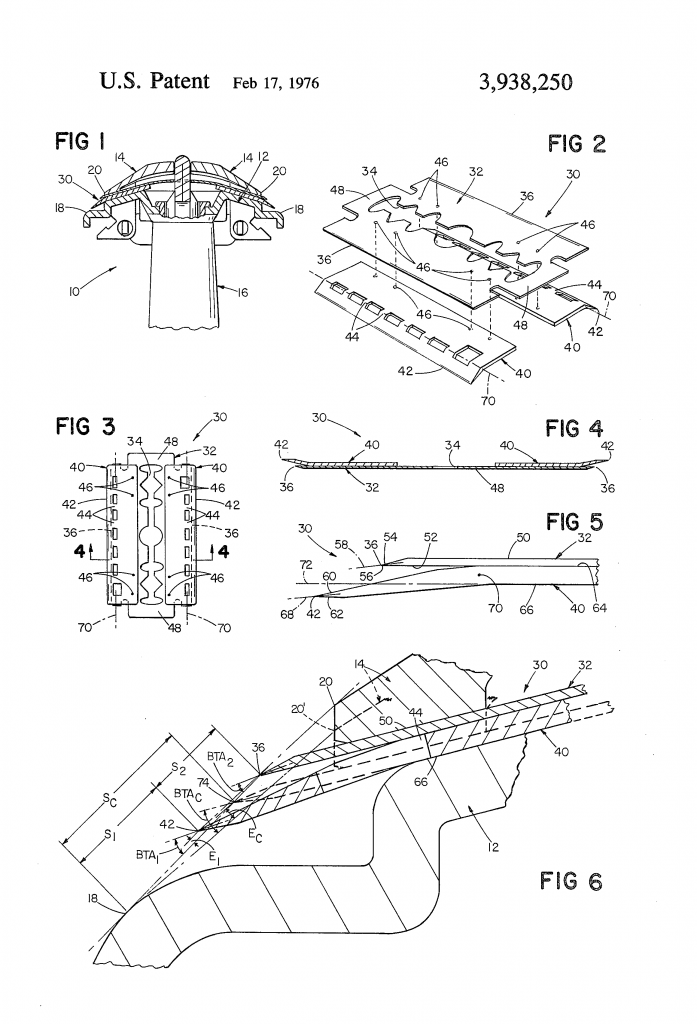Back in 1974 – when cartridges and disposables were starting to be a thing – Gillette patented a disposable blade unit for traditional razors.
In other words, they invented a new blade for a double edge razors. And by invented, I mean combined the inventions of Georg Friedrich Hofmann and Janos Oscar Plesch.
The main problem the patent was meant to solve? Most likely the problem that customers gave their money to people who wasn’t Gillette. But you can’t write that in a patent, so the abstract is a bit more verbose:
A disposable blade unit comprises two sets of cutting edges and a thin, transversely flexible web connecting the two sets of cutting edges. Each set of cutting edges includes a leading cutting edge and a following cutting edge, the cutting edges being permanently secured together in fixed geometrical relation. Each set of cutting edges also includes a support surface adapted to be received on the platform of a safety razor frame. The leading edge of each set is disposed below the plane of the support surface and the following edge of each set is disposed above the plane of that support surface.
From US patent 3,938,250
So… Two cutting edges, like Plesch’s patent. And connected by a flexible web, like Hofmann’s invention. Yet novel enough – apparently – that the patent office granted a patent.
The disposable blade unit was simple enough in concept. On either side of a regular looking double edge blade, a pair of narrow steel strips were attached. The patent suggests by spot-welding, but also hints at adhesive and other suitable means. The long ends of the steel strips were bent and ground to provide the second edge. A serious of opening sin the strip not only made it easier to bend, but also provided a path for lather and stubble to exit the blade unit.

The razor shown in the patent drawing is obviously a twist to open design. It don’t seem to be significantly modified compared to a regular safety razor, which would imply that the disposable blade unit could be used in most existing razors.
So why did this invention seem to have sunk without much trace? In part, I believe, because it was in direct competition with Gillette’s other products – the Trac II cartridge and Good News disposables. And in part because it, honestly, don’t seem to be that much improvement over a regular blade. Probably cost a fair bit more to manufacture as well.
If you want to read the full patent, it is available over at Google Patents.

Pingback: Disposable blade unit - Razors n Blades the shave that saves